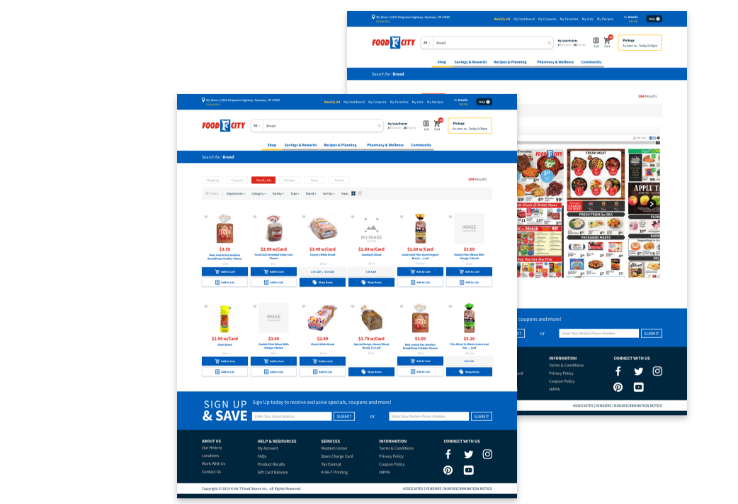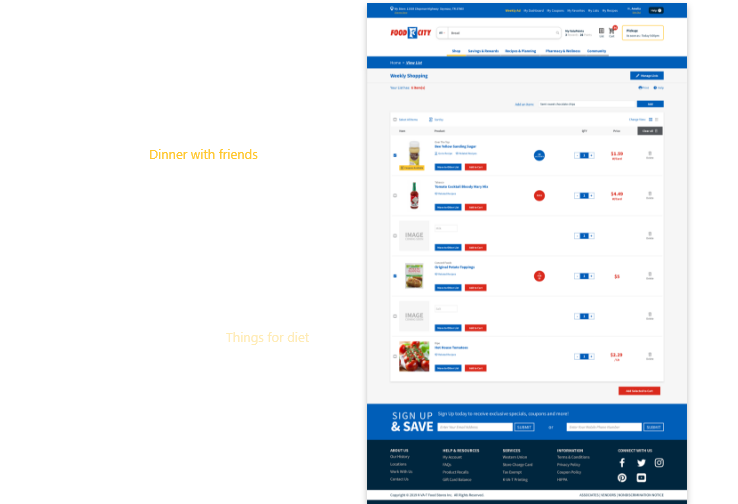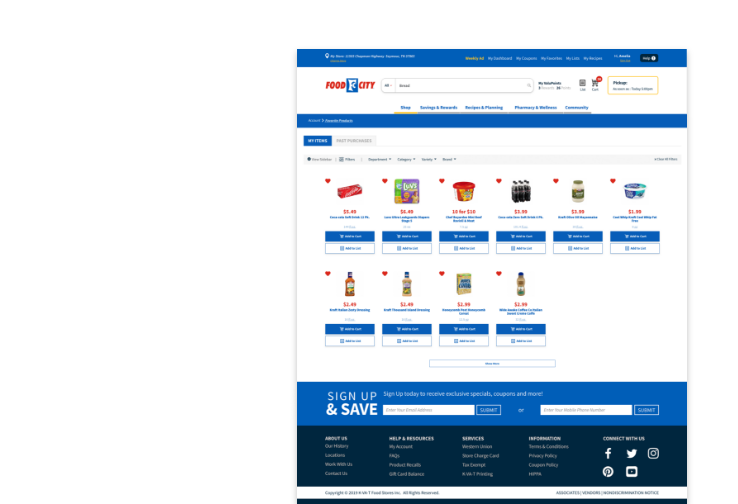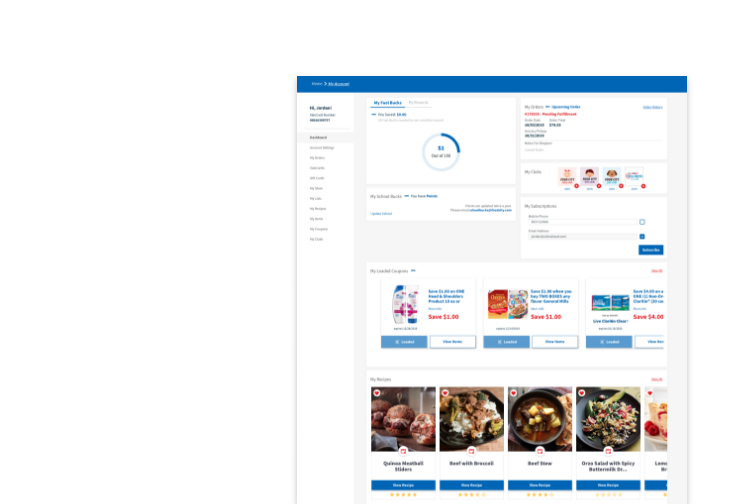
Wellness Club — Asthma & COPD
Abingdon, VA. -
Friday, May 1, 2020.
Written By: Anna L. Lyall, PharmD, , K-VA-T Food Stores
The adage, “April showers bring forth May flowers” rings in our ears as we make our way out of the cold Winter season. However, as we start to feel those rays of sunshine peeking through the rain, some of us may begin to experience a greater need for inhalers that control symptoms associated with Asthma or COPD.
What is Asthma?
Asthma is a disease that affects the airways of the lungs. Individuals with asthma typically experience recurrent episodes of wheezing, difficulty breathing, chest tightness, and coughing. Fortunately, the inflammation and airway constriction are reversible with medication. Most types of asthma activate inflammatory mediators and cause an increase in inflammatory cells which contribute to the disease process. Symptoms may worsen with a viral infection, exposure to allergens, changes in weather, hard laughing or crying, stress, or other factors. Symptoms may also worsen at night. When asthma is suspected it is important to speak with your provider to rule out other reasons for difficulty breathing.
Controlling Risk Factors in Individuals with Asthma:
• Review your asthma action plan.
• Confirm proper inhaler technique with a health care professional such as a Food City Pharmacist. (Many patients do not use their inhaler correctly)
• Receive an annual influenza vaccine.
• Talk with a health care professional about receiving the pneumococcal vaccine.
• Control other conditions like allergic rhinitis, acid reflux, obesity, sleep apnea, anxiety/depression.
• See a provider every 1-6 months after control is achieved.
• Avoid exposure to tobacco smoke.
• Engage in physical activity as advised.
• Receive allergy testing.
Asthma Treatment:
Classification of asthma severity guides the decision of treatment. However, every patient with asthma should always have a rescue inhaler on hand, such as Albuterol, ProAir, Ventolin, Proventil, Levalbuterol, or Xopenex. Rescue inhalers are classified as short acting beta agonists (SABAs). These agents expand airways and relax smooth muscle. SABAs work immediately but should only be used on an as needed basis. For most patients, rescue inhalers should be used no more than twice per week. Patients who are well controlled should not experience nighttime awakenings more than once or twice per month.
Some individuals may need an Inhaled Corticosteroid (ICS), which is an inhaler that should typically be utilized every day. ICSs include medications like Budesonide (Pulmicort), Fluticasone (Flovent), and Mometasone (Asmanex). Inhaled corticosteroids are powerful anti-inflammatory medications that go straight to the lungs if used correctly. ICSs are the most effective medication for long term control of persistent asthma. After ICS utilization, it is important to rinse the mouth with warm water to avoid thrush or mouth irritation.
Sometimes additional therapies are needed to control asthma symptoms. Long Acting Beta Agonists (LABAs) like Salmeterol (Serevent) or Formoterol (Perforomist) are examples of inhalers that may be added to a current regimen. LABAs should never be used alone in the management of asthma. Oral medications may also be added to achieve asthma symptom control.
What is COPD?
Chronic obstructive pulmonary disease (COPD) is characterized by worsening airflow limitation and respiratory symptoms. COPD can often be prevented but generally progresses over time once a diagnosis is made. Although medications may not reverse airway constriction, they may help relieve symptoms improving health status and exercise tolerance. COPD most commonly occurs as the result of using tobacco smoke; however, other air pollutants and/or genetics may also contribute. A diagnosis of COPD should be considered in anyone who has a chronic cough, sputum production, or shortness of breath that continues to worsen over time. When COPD is suspected it is important to speak with your provider to rule out other reasons for shortness of breath. (See footnote located at end of newsletter.)
Controlling Risk Factors in Individuals with COPD:
• Review your COPD action plan.
• Smoking cessation if currently smoking.
• Confirm proper inhaler technique with a health care professional such as a Food City Pharmacist. (Many patients do not use their inhaler correctly)
• Avoid lung irritants.
• Receive an annual influenza vaccine.
• Talk with a health care professional about receiving the pneumococcal vaccine.
• Control other conditions like diabetes, anxiety, depression, osteoporosis, or cardiovascular disease.
• Engage in physical activity as advised by your health care professional.
COPD Treatment:
COPD has no cure yet, but lifestyle changes and treatments can help you feel better, stay more active, and slow the progress of the disease. Bronchodilators are first-line medications for all patients with COPD, these medications relax the muscles around the airways. Providers may assess the severity and determine treatment using the GOLD guidelines. Short acting inhalers like Albuterol and/or Ipratropium bromide may be used as to improve symptoms. However, unlike asthma treatment, an inhaled corticosteroid (ICS) is not recommended alone in patients with COPD. However, ICSs may be added to other inhalers that open the airways such as Tiotropium (Spiriva), Salmeterol (Serevent) or Formoterol (Perforomist). Oral medications may also be used in addition to inhalers to control symptoms associated with COPD.
Differences:
Asthma: Age of onset often early in life, variable symptoms which do not typically worsen over time, and symptoms which are usually worse at night or early in the morning. First-line treatment: inhaled corticosteroids.
COPD: Age of onset often mid-life, history of tobacco smoking or exposure to other types of smoke, and symptoms that get worse over time. First-line treatment: bronchodilators.
Due to the current pandemic of COVID-19, symptoms of Asthma and COPD may closely resemble symptoms associated with the Coronavirus. A diagnosis of Asthma or COPD may place you in a vulnerable population. If you are concerned you may have COVID-19 please call a Ballad Health Nurse at 833-822-5523.
This newsletter is not all inclusive, please see your primary care provider to determine the best treatment regimen for you.
References: “Asthma Care Quick Reference.” Guidelines from the National Asthma Educations and Prevention Program, Content Source: National Heart, Lung, and Blood Institute, 12 September. 2012, Accessed 9 April. 2020 https://www.nhlbi.nih.gov/health-topics/asthma
“Global Initiative for Chronic Obstructive Lung Disease.” Global Strategy for the Diagnosis, Management, and Prevention of Chronic Obstructive Pulmonary Disease, Content Source: GOLD Reports, 2020 Report, Accessed 9 April. 2020 https://goldcopd.org/gold-reports/
“COPD.” Also known as Chronic Obstructive Pulmonary Disease, Emphysema, Content Source: National Heart, Lung, and Blood Institute, Accessed 21 April. 2020 https://www.nhlbi.nih.gov/health-topics/copd












